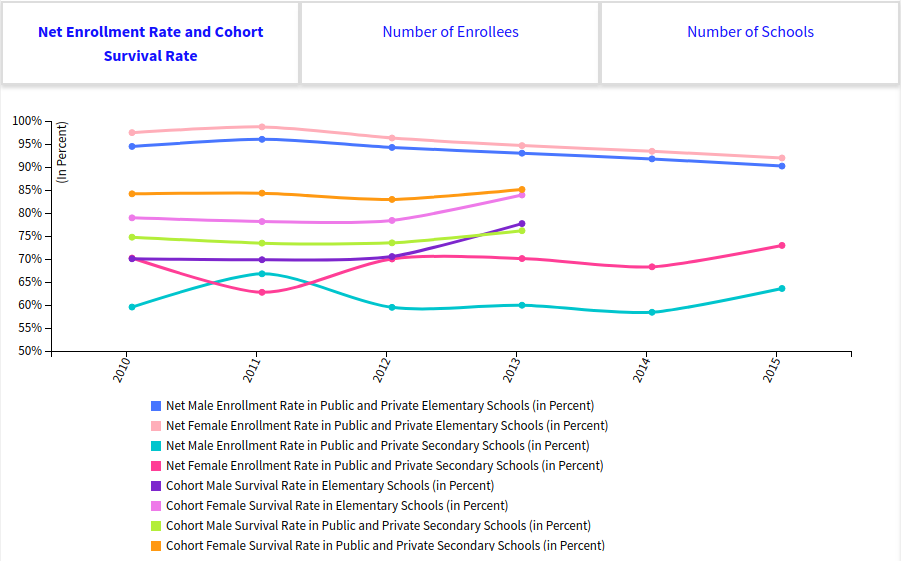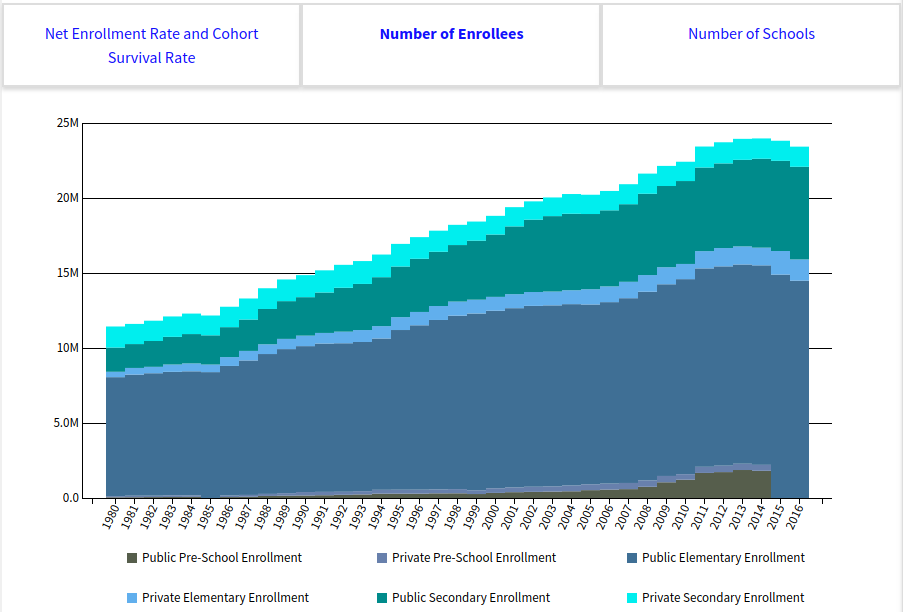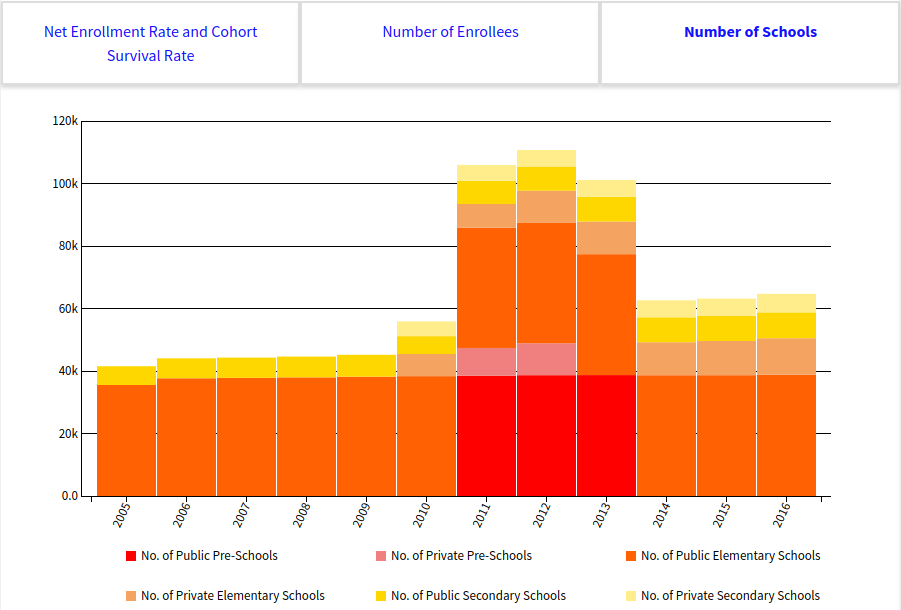In this special feature of PCIJ’s Money Politics Online portal, check out all the data you need on:
* The number of public and private elementary and secondary schools, from 2005 to 2016;
* The number of enrollees in public and private pre-school, elementary, and secondary schools, from 1980 to 2016; and
* The net enrollment rate and cohort survival rate of male and female students in public and private elementary and secondary schools from 2010 to 2015.
————————————————————————————————————————————————————————————-
NO LESS than the highest law of the land requires the State to promote and protect the right of all citizens to affordable, accessible, and quality education.
The Philippine Constitution in Article XIV, Section 5 obliges the State to “assign the highest budgetary priority to education and ensure that teaching will attract and retain its rightful share of the best available talents through adequate remuneration and other means of job satisfaction and fulfillment.”

Net enrollment rate and cohort survival rate for male and female students, in public and private elementary and secondary schools, from 2010 to 2015.
The number of children aged 6 to 12 years old who are enrolled in pre-school to primary school have consistently recorded upticks for decades now. But in time, some of them soon fall out of school.
Only more than half of Filipino children aged 12 to 16 years old are enrolled in secondary school.

Number of enrollees in pre-school, elementary, and secondary schools, public and private, from 1980 to 2016.
The total cohort survival rate — the percentage of students at the beginning of the school year who make it to the final year of their elementary or secondary school levels — range from 67 to 80 percent only. This means that for every 10 children who enter Grade 1, from two to four do not finish Grade 7 or senior high school.
Indeed, the public school system remains weak at the seams. While the total number of public elementary schools in the Philippines has steadily increased, the total number of secondary schools declined in school year 2009-2010, but also recorded a rapid rise in school year 2011-2012.
As Balik Eskwela kicks off this June, PCIJ offers you this treasure trove of information on Education sourced from official documents and data files, some of them dating back to 1980.
Check out PCIJ’s Money Politics Online, a citizen’s resource and research tool on governance, politics, public funds, and socio-economic issues. — PCIJ, June 2017
